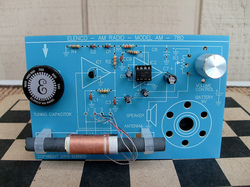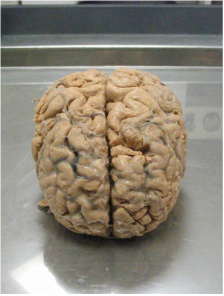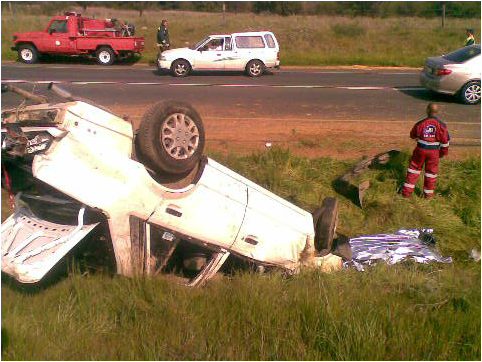
The kind of damage that is done to the brain is related to the speed of both the vehicle and what it hits. The phrase "speed kills" is oh so true. It also maims and in its wake, can cause life-altering consequences. Just look at the studies that evaluate the kinds of accidents associated with varying speeds. It's not pretty. It's so much fun to go fast and teenagers love to experience SPEED!

First, a bit of anatomy. As I said, the brain is contained by the dura. It's actually called dura mater which is Latin for "tough mother". Oh yeah. [When I first handled one, I thought it felt leathery.] The dura has three layers: The epidura is closest to the skull, the dura is in the middle and the subdura is closest to the brain itself. You've heard the term "subdural hematoma" in television shows. This mean that the subdura is bruised and is very close to the brain. The brain itself is vulnerable to bruising in high-speed accidents.
Second, while the skull is smooth on the outside, but there are bony outcroppings on the inside. Dare I say this is a design flaw?
Third, the brain does not fill the skull, so it keeps moving when the head/skull stops Yes, it's a recipe for disaster when you slam into the car in front of you. But, how does all this happen?
Your car stops, the seatbelt captures you and your head slams back and forth against the headrest. Everything stops, EXCEPT YOUR BRAIN! Remember that the brain does not fit the skull, so it bangs around in a dynamic referred to as "coup-contrecoup" meaning back-and forth.
When the brain slams around, the dura can be pricked by those bony outcroppings and then, you're in trouble. If blood starts to spill out, the brain swells and the swelling exposes even more areas of the brain to being pricked by the bony outcroppings. If this process continues, the brain will need more room to swell. Doctors will then remove pieces of skull, tuck it into an incision in your abdomen to keep it at the right temperature and pH balance so that it stays alive and then, the brain swells outside the skull. If the brain had nowhere to swell, your life would surely be in danger.

There's only so much you can teach your kids. Teenagers, but their very nature, are experiential. They don't believe it until they've experienced it. However, there are some experiences with life-long or life-altering consequences such as drug use, early parenthood and brain injury.
Do your best to give them a "quick and dirty" education about the dangers of speed and how much the brain does not enjoy being slammed around in the skull. The brain gets angry and parts of it stops working. What would you rather lose? Your memory? Your language skills? Your ability to concentrate? Your ability to make a sandwich (sequencing, task persistence/executive functioning)? Your ability to drive, go shopping, on a date, to college? Ask them those kinds of meaningful questions.
As you know, parents, life is capricious and mostly uncontrollable. There's way too much luck involved in raising kids. If you can use some of this information to drive home the point, that's all you can do. Good luck and just do the best you can.
TTFN, Claudia



